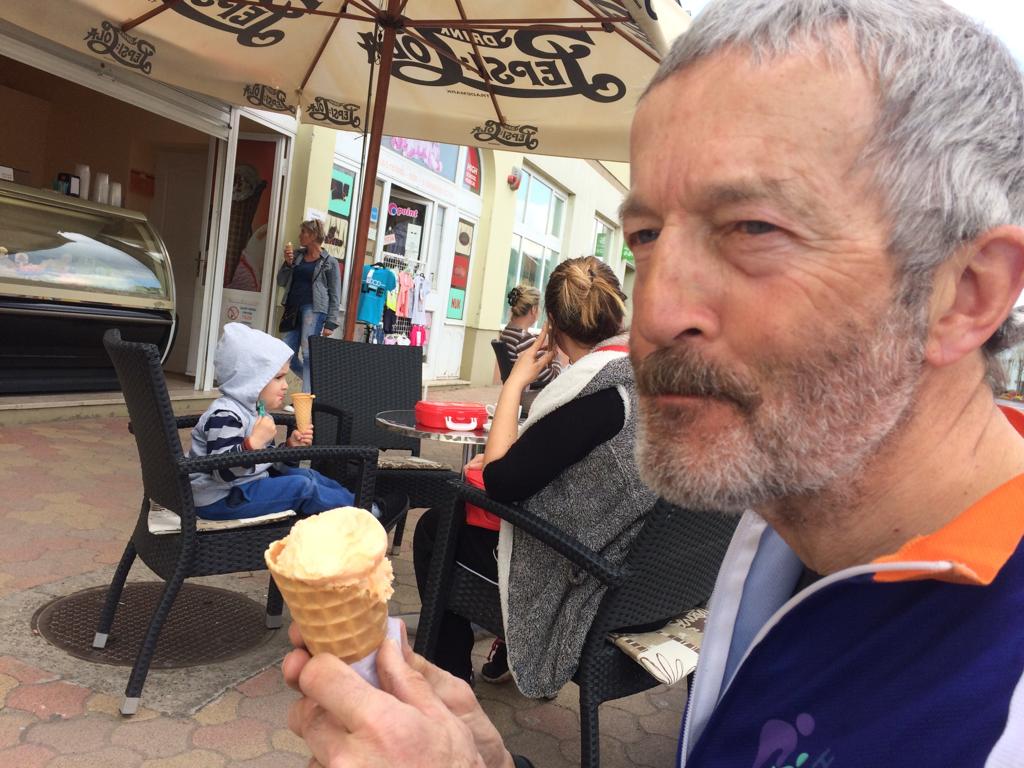A Ride For Andrew - In Support Of The Hyper IgM Foundation
Follow Roger's Bike Journey Across The Iron Curtain Trail

Follow Roger's Bike Journey Across The Iron Curtain Trail
Support The Hyper IgM Foundation In Memory Of Andrew Thomas
I am embarking with two friends on a cycle trip from Istanbul, Turkey back to the island of Anglesey, North Wales on the 28th March, following a route known as the 'Iron Curtain Trail' that borders the former Soviet countries. We have dubbed the trip the 'Asia to Anglesey' – we will start from the eastern side of the Bosporus – and will cover 5,500km (3,400miles) in around 56 days (ie. April and most of May).
On the way, we will pass through 16 countries, traverse 4 mountain ranges and potentially encounter everything weather-wise on the snow to sun spectrum. I will be blogging my experiences and encounters on an as-near to daily basis as possible, so that everyone who is interested can share our journey.
We are all retired now, which gives us the opportunity to pursue an adventure that we've talked about for the last few years, and I'm hoping to raise money for Hyper IgM in memory of my younger brother, Andrew. Andrew – or And, as I've always called him – was and remains a well-known member of the Hyper IgM community. It's probably not often that a younger sibling is your hero, but And's zest for life and ability to shrug off the shackles of seriously-debilitating illness were truly inspiring to all who knew him.And passed away just over 13 months ago, but there isn't a day when something doesn't happen that reminds me of him – and `I know that goes for the rest of our large family and all his friends and colleagues. And did all he could to help fund research into combatting Hyper IgM syndrome; he would be delighted that this ride is contributing to further research.
So follow the route map and keep up with the blogs – it will be an interesting way to get perspectives on a third of the countries that make up Europe…..and rest assured that every penny/cent raised will go to Hyper IgM, as the trip is being financed entirely by ourselves.
You can donate here and sign-up to follow my blog through the Hyper IgM Foundation's Blog here.
UPDATES:
Please follow Roger's journey and daily updates on our website blog here:
https://www.hyperigm.org/rideforandrew/
Older updates below, but please follow the blog for current updates.
Click here to see a map of the current location of Roger and his crew!
 On a glorious Kanjizan morning we cycled the few kilometres to the Hungarian border, which we crossed with surprisingly little formality. Bikes, like pedestrians, were allowed to jump the car queue; lorries stretched back as far as we could see.
On a glorious Kanjizan morning we cycled the few kilometres to the Hungarian border, which we crossed with surprisingly little formality. Bikes, like pedestrians, were allowed to jump the car queue; lorries stretched back as far as we could see.
April 17th, 2019:
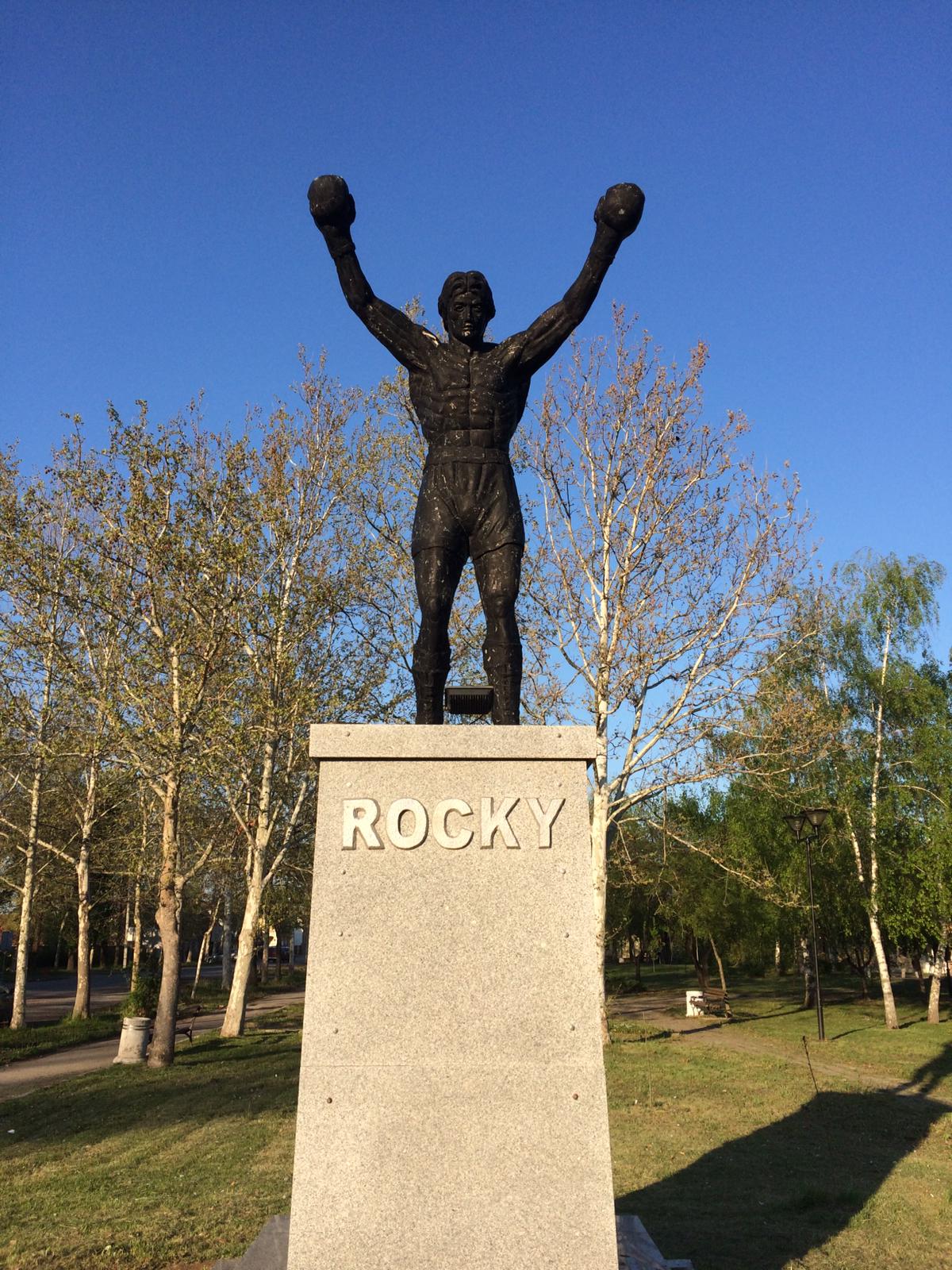
After about 25km, we stopped for coffee in the small town of Nova Crjna. A Roma market, selling secondhand clothes and various used goods, was underway. Spotting my leggings, one of the stall holders suggested to Andy and Steve - who were in shorts - that he had a range of ‘pantaloons’ that they might find useful
We continued towards the Romanian border, before turning westwards on the road to Hungary. The city of Klandinski, where we had lunch, was alive with people enjoying their midday break. As well as office workers, students and school pupils, children from a nursery were playing in the city centre, all resplendent in Easter bonnets.
A large EV13 information board, prominent in the main square, confirmed our afternoon route. Once again, it was long, straight roads and a fairly strong headwind..........

front of us, sprinting away across a field of hound wheat. A little further on a hare stopped to look at us before loping off into the distance.
From there to our overnight stay in Kinjasa took us until 7pm. We’d covered 110kms against a strong headwind.
April 16th, 2019:

The early morning mist gave way very quickly to sunshine as we left Vrsac. Despite dreaming that I was stranded in the desert, and then waking to find that the apartment heating system had run amok, the disturbed night did not impair the enjoyable ride through the city.
A vast agricultural plain stretched out in front of us, with apples and wheat the dominant crops. The roads were straight and endless, with a northerly wind.......as we headed north!
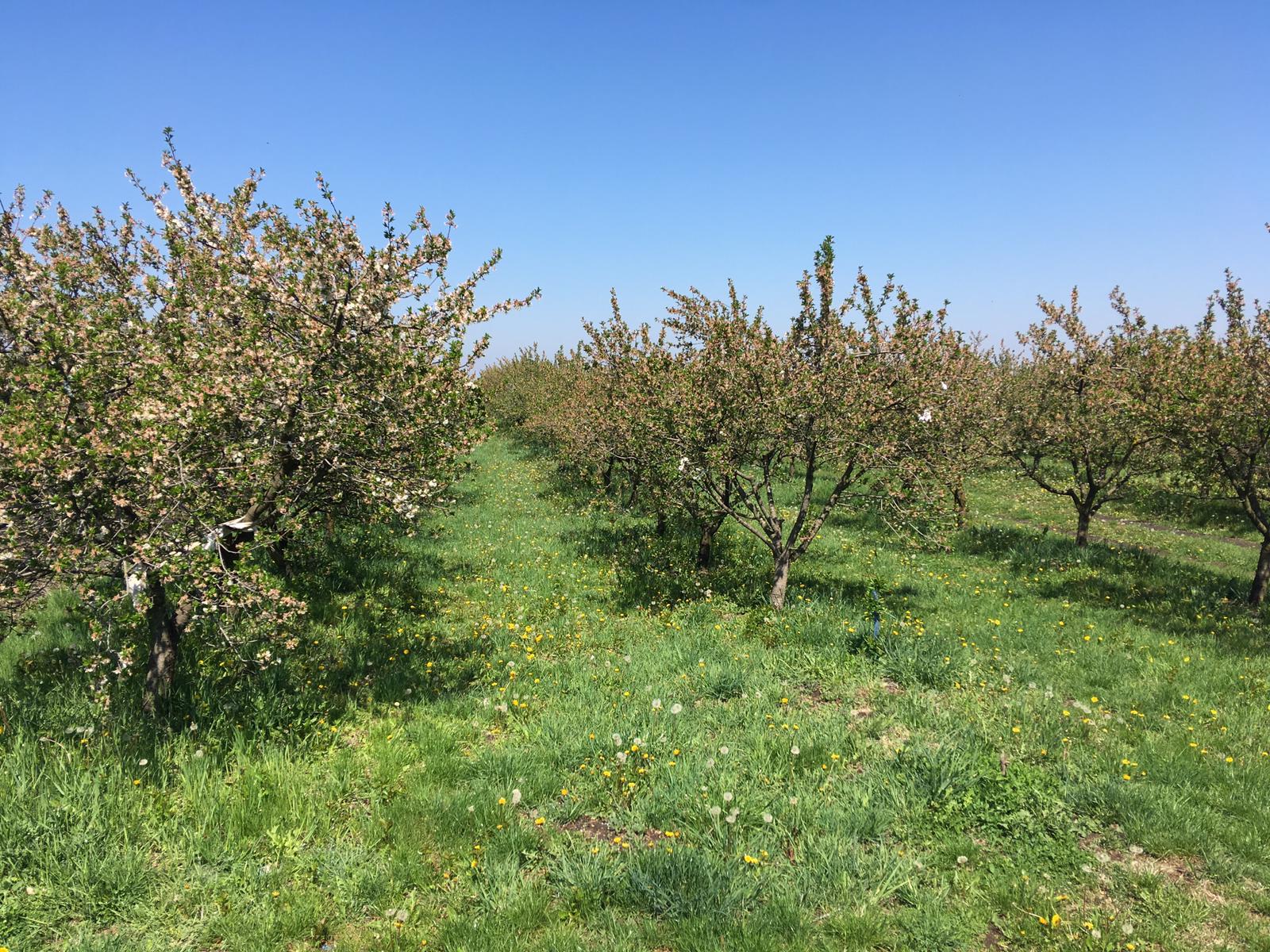
I made a slight error at our morning coffee stop in Plandiste, where a misunderstanding resulted in us all being served thick Turkish coffee, the silver lining being a piece of Turkish delight. I was unsure whether my compatriots felt that the silver lining outweighed the cloud.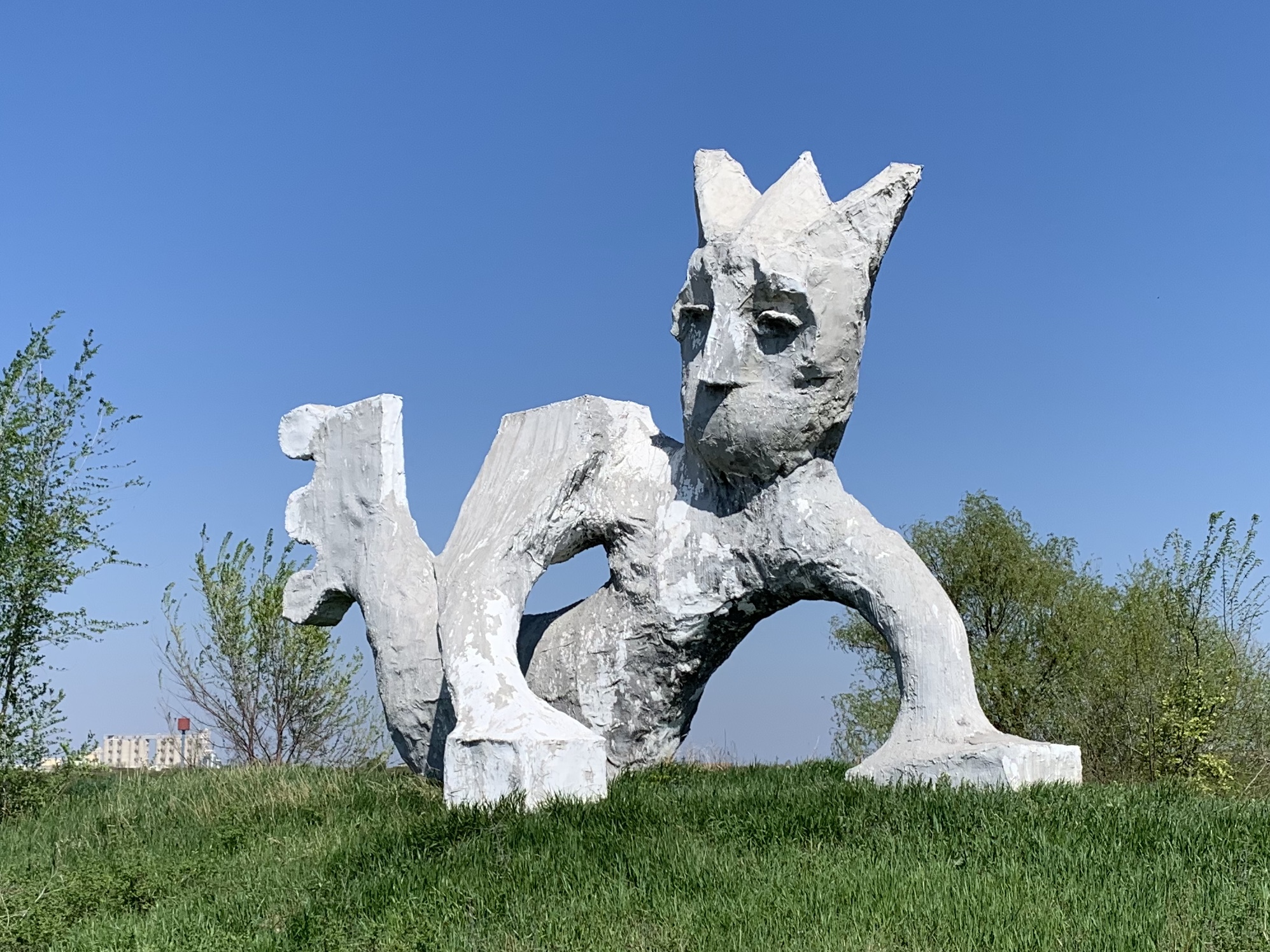
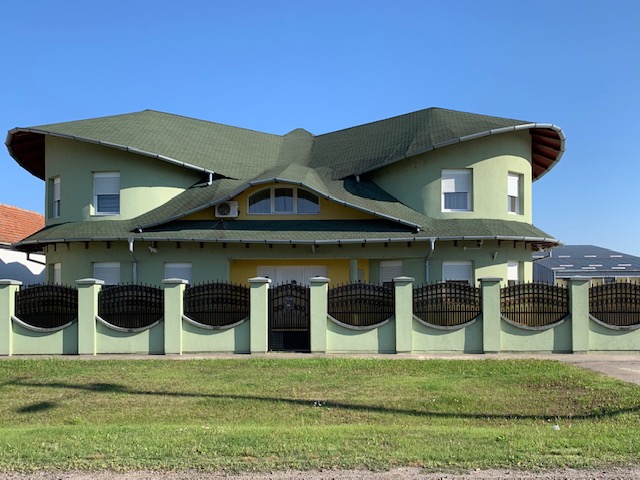
We then passed through the villages of Lazarevo and Klerk. With a number of imposing and clearly empty houses, both settlements reflected what we’d learnt was a Balkan cultural norm - those working abroad built large and distinctive properties in their home villages but, of course, they were unoccupied most of the time.
A huge mound of rotting straw - the third we’d seen - confirmed the prevalence of cereal production. The open landscape of massive fields meant that we did not see much wildlife, although the song of the skylark was ever-present.
After 93km we reached Zitiste, our overnight stop. The main feature of the town centre was,
rather bizarrely, a sculpture of the Sylvester Stallone character Rocky!
April 15th, 2019:
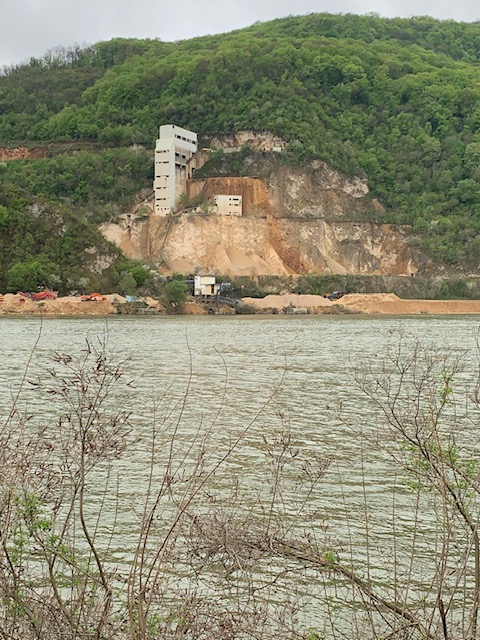 An excellent breakfast, served by the matriarchal head of Pensinuea Sanella, set us up for an enjoyable day’s ride. We were directed to a small shop for replenishing our water supplies, Steve and I becoming temporary assistants for restocking as the owner had a broken arm and could not carry the bottled water up from her storage area.
An excellent breakfast, served by the matriarchal head of Pensinuea Sanella, set us up for an enjoyable day’s ride. We were directed to a small shop for replenishing our water supplies, Steve and I becoming temporary assistants for restocking as the owner had a broken arm and could not carry the bottled water up from her storage area.All along the river fishermen were camped out, with up to 10 rods each in the water. Despite all this fishing effort, we saw no fish!
An interesting riverbank quarrying operation on the Serbian side had a lift shaft to get products up to the road high above. On the water, a number of boats - some with outboard engines, others being towed - were pulling in nets. Having drifted some way ahead of Andy and Steve, I was alarmed to twice be chased by small packs of dogs and was left wishing that I had the sonic dog deterrent.
 The wide river gorge in which we’d been cycling broadened our into an impressive lake, with the ten-towered 14th century Golubac Fortress on the Serbian side. In the fishing village of Coronini, with its pastel-coloured terraces of cottages, nets were being mended. A Forth Bridge-style railway crossing seemed to cross over the Romanian mainland to the island in the middle of ‘Lake Danube’, but we could find no evidence of its existence on our maps....
The wide river gorge in which we’d been cycling broadened our into an impressive lake, with the ten-towered 14th century Golubac Fortress on the Serbian side. In the fishing village of Coronini, with its pastel-coloured terraces of cottages, nets were being mended. A Forth Bridge-style railway crossing seemed to cross over the Romanian mainland to the island in the middle of ‘Lake Danube’, but we could find no evidence of its existence on our maps.... Rain started falling as we entered Moldova, where seemingly the entire population was heading with purpose in the same direction. Enquiring at a cafe as to what was going on, the barista said it was simply a normal Monday morning!
Rain started falling as we entered Moldova, where seemingly the entire population was heading with purpose in the same direction. Enquiring at a cafe as to what was going on, the barista said it was simply a normal Monday morning!The rain continued until we were about halfway up an 8km climb of about 400m towards the Serbian border. By lunchtime we were back in Serbia and, after a welcome meal, enjoyed cycling in warm sunshine through extensive apple plantations. We passed through the attractive towns of Kusic and Bela Crkva, the latter having an impressive church (and the clue, as I later realised, being in the name!).
 Nearing Vrsac, our destination, the skies darkened threateningly and, just after we donned waterproofs, the heavens opened for a 15 minute deluge; there had been no rain in the city, though. As ever, local people were very helpful in locating our accommodation, one even phoning our host, Milan, to arrange a rendezvous.
Nearing Vrsac, our destination, the skies darkened threateningly and, just after we donned waterproofs, the heavens opened for a 15 minute deluge; there had been no rain in the city, though. As ever, local people were very helpful in locating our accommodation, one even phoning our host, Milan, to arrange a rendezvous.Milan stored our bikes at his home, a few minutes walk from the apartment we’d rented, gave us coffee and then took us by car on a tour around the centre of this charming cathedral city. A good day’s ride and another 103km under the belt!
![]()
April 14th, 2019:
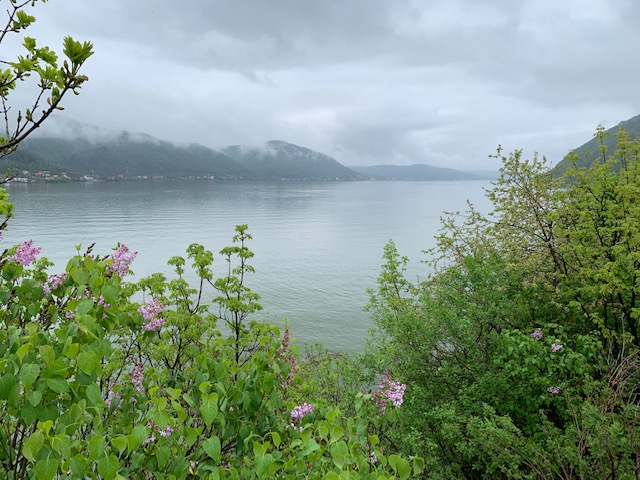
Orşova, our overnight stop, had an attractive riverfront but, just one street back, the challenge of improving the infrastructure was evident. Light rain fell as we headed westwards up a steep hill, past people responding to the calls of atholic church bells. Cresting the top, we dropped down to the Danube and entered Eselnita, a place defined by two far-apart signposts but with no obvious settlement!
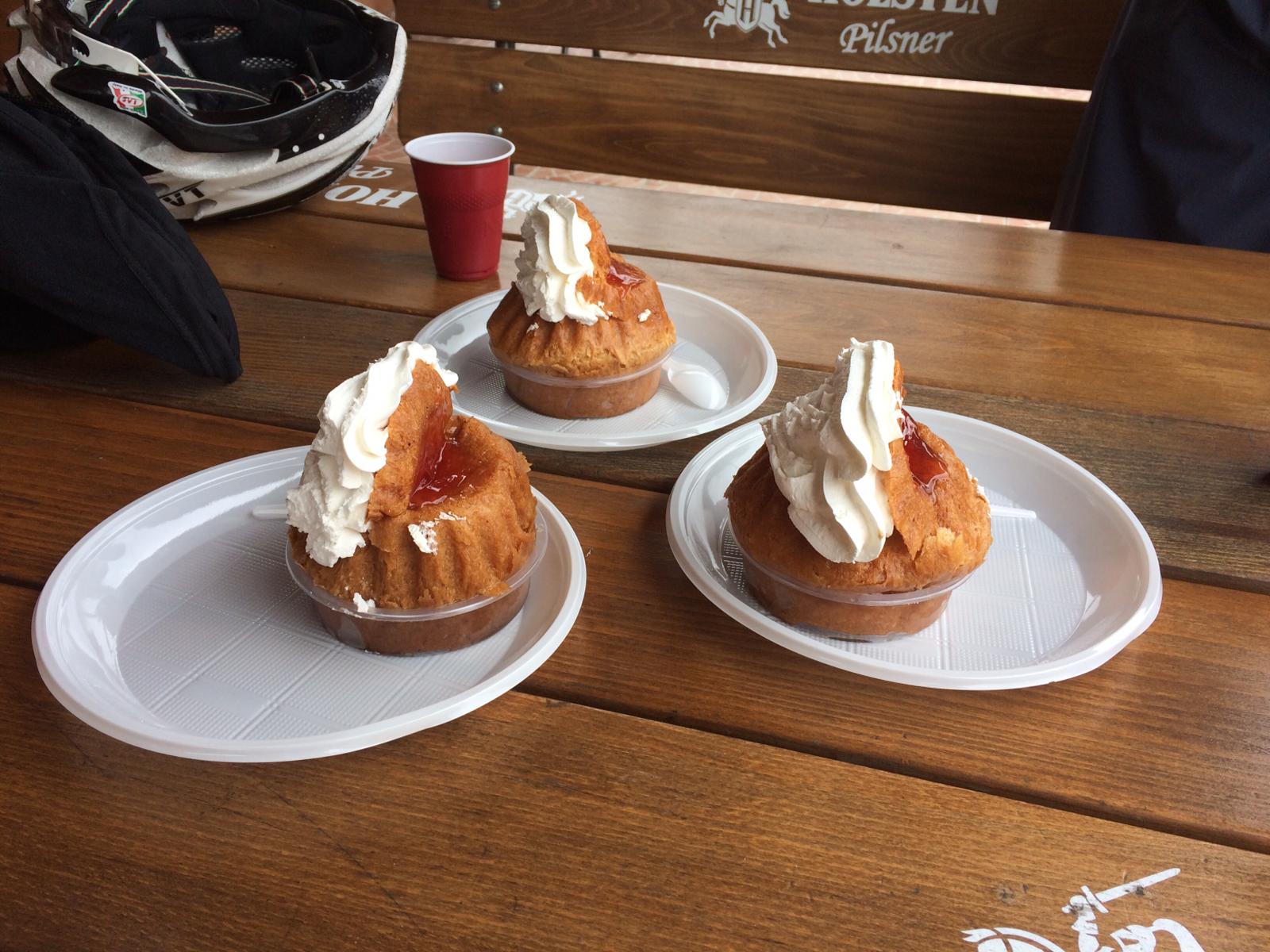
We rode along the river to Dubova, spotting a large river cruise boat and, at one stage, a hoopoe in the roadway. Dubova heralded our second climb, a two-stage affair. Part way down the first stage, progress was halted as a goatherd led his flock across our path.

We stopped at a grocery called Anne’s Pantry, where an enormous Romanian speciality cake - not unlike a rumbaba - restored our energy levels. Just along the road we came to the massive rock carving of the ancient king, Decebalus, a 40–metre high monument that took 10 years to complete. It was a pretty accurate depiction of what we’ll look like by the end of this trip! Further along, an ornate church occupied prime position on a river promontory.
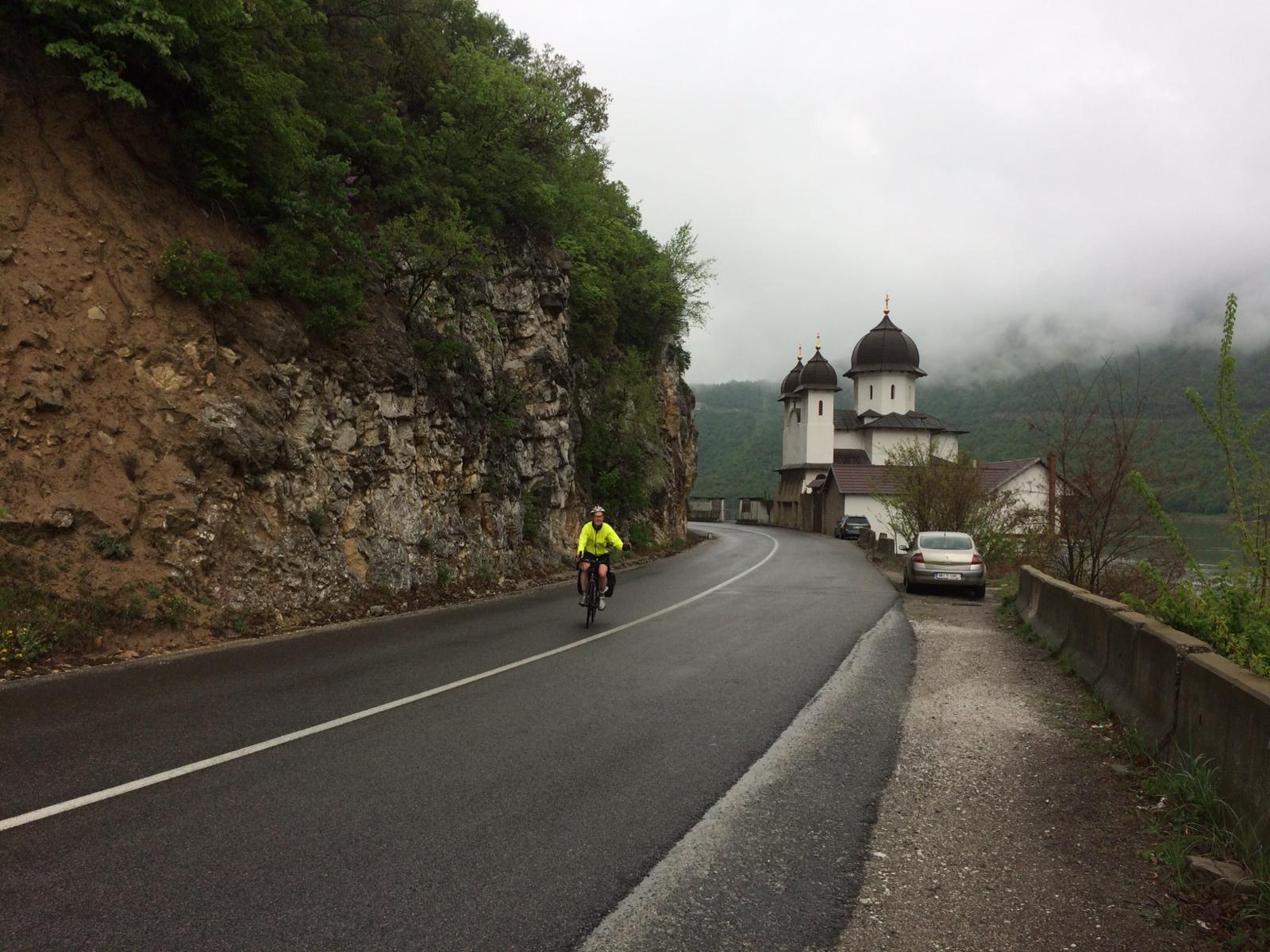
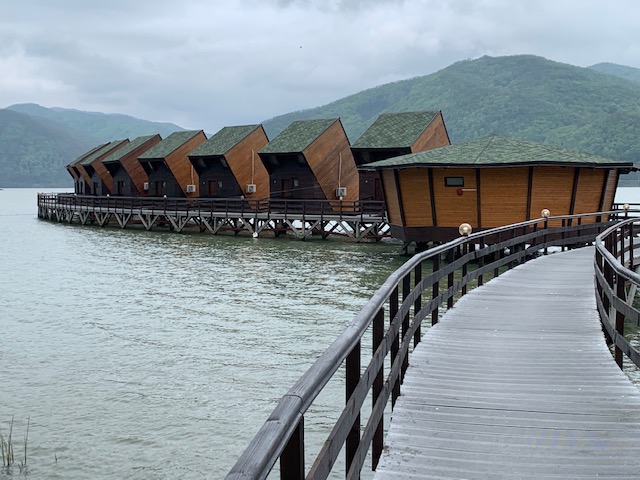
April 13th, 2019:
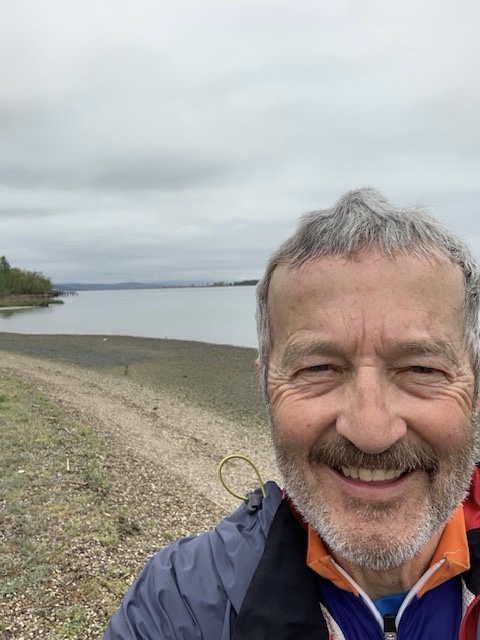 Following some bike maintenance after an excellent breakfast, we said goodbye to Bojan and headed out of Negotin on EV13. Rain was falling softly but steadily, the huge puddles evidence of heavier overnight precipitation.
Following some bike maintenance after an excellent breakfast, we said goodbye to Bojan and headed out of Negotin on EV13. Rain was falling softly but steadily, the huge puddles evidence of heavier overnight precipitation.
After about 8kms we had our first site of the Danube and România beyond. Bojan had advised us to avoid an unmade section of EV13 - but we missed the alternative route and found ourselves on a muddy track running alongside the river. Fortunately this was short-lived and, after a couple of kilometres, the surface became smooth again. The river was bordered with mostly second homes, only the occasional house being occupied. Swallows and martins chased insects above the water surface, whilst the background song came from terns and the ever-present skylarks. Hoopoes were once again in evidence and a lone deer sprinted across the road ahead of us.
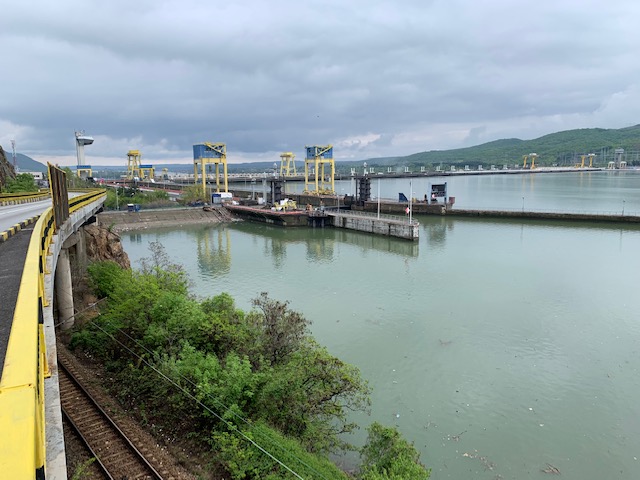
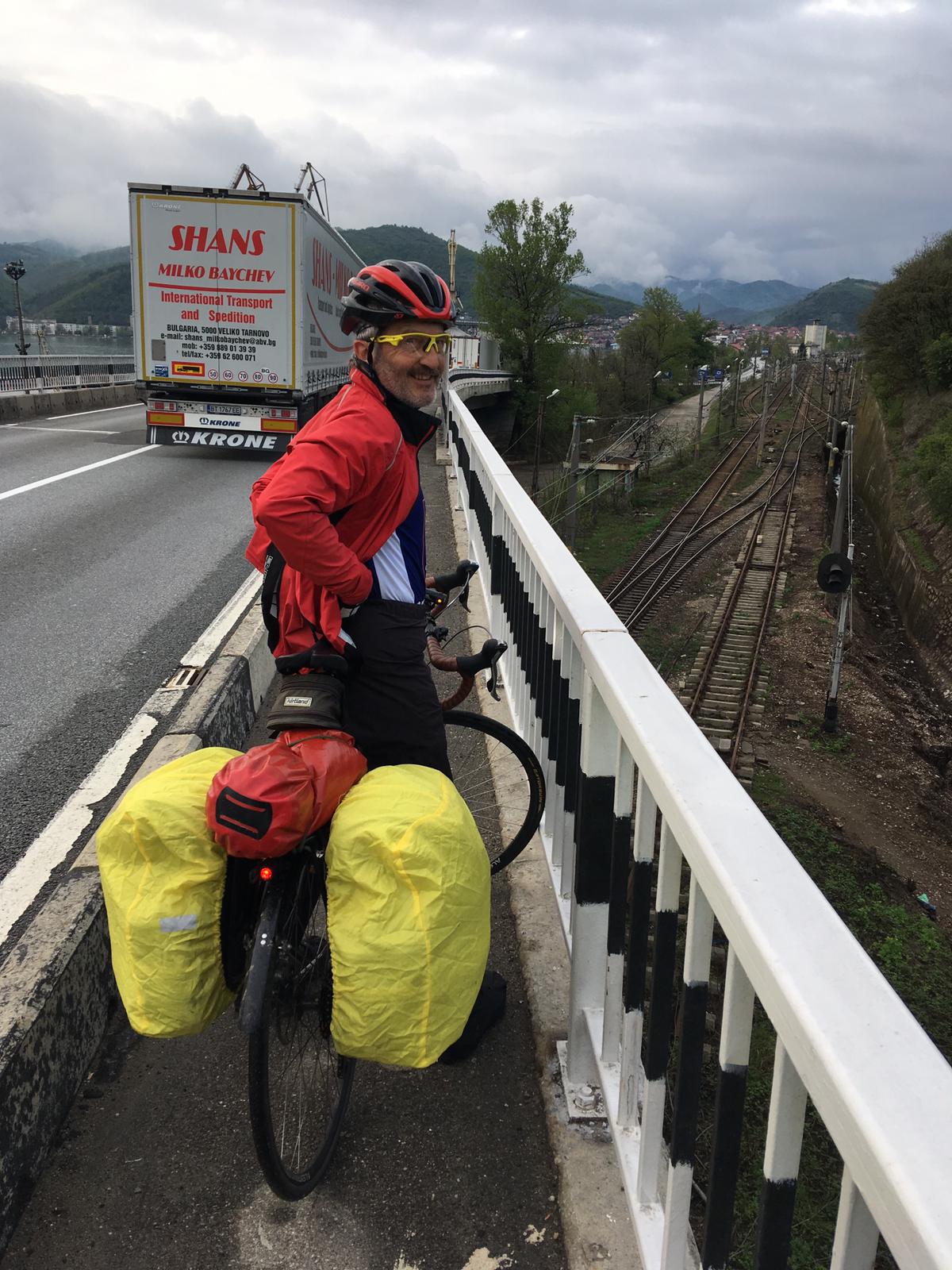
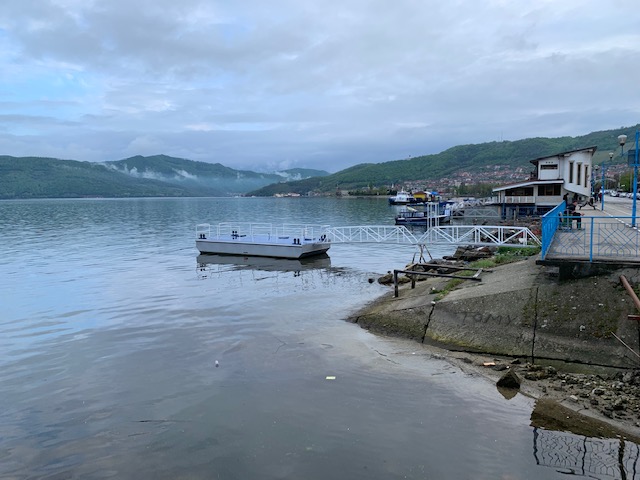
April 12th, 2019:
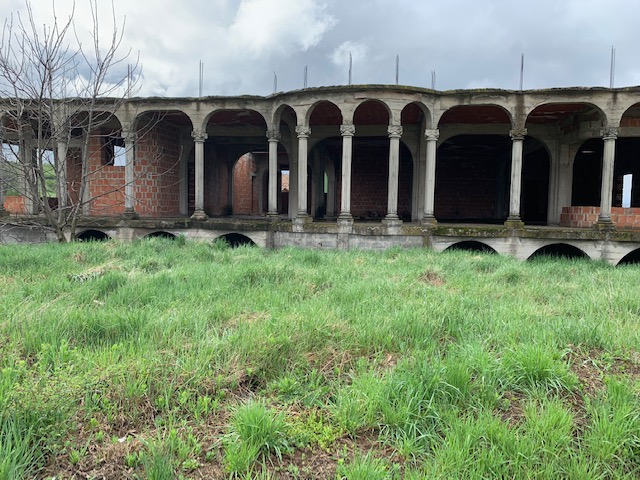
Zajecar - birthplace of three Roman emperors - was a hive of activity as we left the excellent Sirbija Tis hotel, an establishment where nothing seemed too much trouble for the staff. Exiting the city proved straightforward and we were soon rolling through another horticultural floodplain.
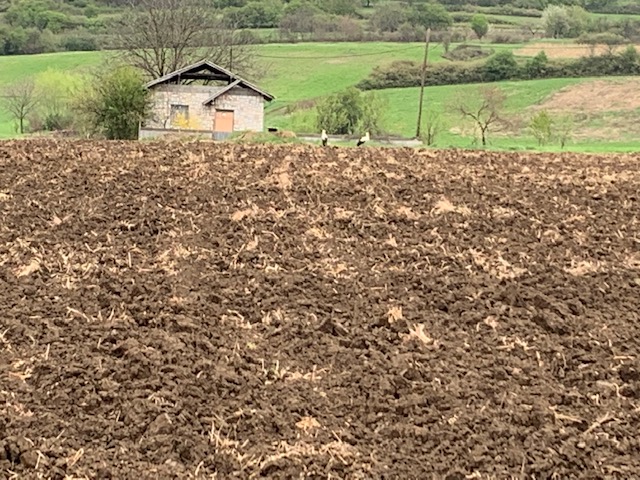
Possibly confirming the historical connection, a latter day recreation of a Roman villa on the outskirts had been abandoned as a shell! We spotted two storks in the middle of a large ploughed field and, just after, Andy caught a fleeting glimpse of a hoopoe. Our only significant climb of the day followed, a fairly stiff ascent of up to 10% taking us 250m above the valley and onto what seemed like a tableland - a wide plateau at about 300m of good agricultural land.

EV13 was well-signposted as we rode through a number of small villages, but our hopes of a morning coffee were dashed by the lack of cafes.
Light rain had been falling, but this now increased in intensity as we passed a small, recently-built chapel.
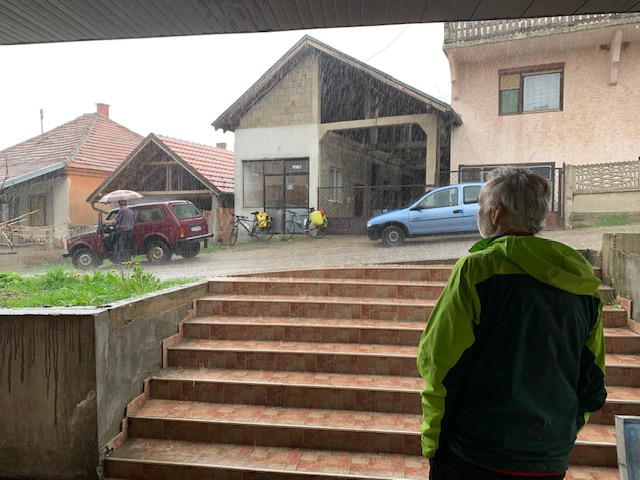
Part-way down the descent we arrived in Sipikovo, where a group of elderly people were engaged in lively conversation at the village store. We were told that it wasn’t a cafe, but that they would nevertheless make us coffee. As we chatted with Julijana, an English-speaking law student managing the store for her father, a clap of thunder heralded an almighty downpour. For the next 90 minutes we sheltered, enjoying some typically-generous Serbian hospitality - free coffee served with some freshly-cooked pastries and yoghurt.
All payment was refused and the villagers waved us off with a cheery ‘zbogom’ (goodbye) as, by-now fully clad in waterproofs, we headed down the mountain. We had learned that there were both gold and copper mines locally, probably explaining why the river we later cycled along had a distinctive green-blue hue.
The road was also like a river, the heavy rain returned and we frequently found ourselves tackling a flooded carriage-way. Crossing and re-crossing the railway line towards Negotin, we passed a cemetery where a brass band was playing at a funeral.
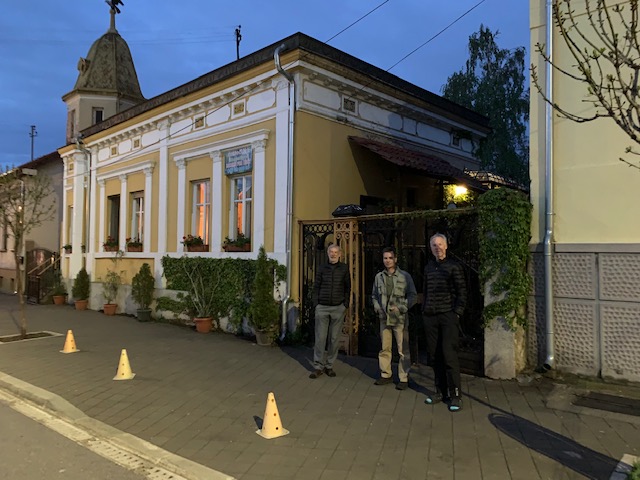
It was dry for the final 10kms and, on reaching the city centre, two helpful local lads guided us to our overnight accommodation at a haven for cyclists. Our host Bojan, fluent in English and a tennis coach, described the city and its history - and then came with us to the local restaurant that he recommended. Only 66km covered on this very wet day, but we were grateful for the early night!
April 11th, 2019:
Light rain fell as we said goodbye to Milan, our friendly and helpful apartment host in Pirot. The road out along the river from this busy city of just over 30,000 people took us past the vast Tigar Tyres complex, perhaps the reason why Pirot seemed so prosperous.
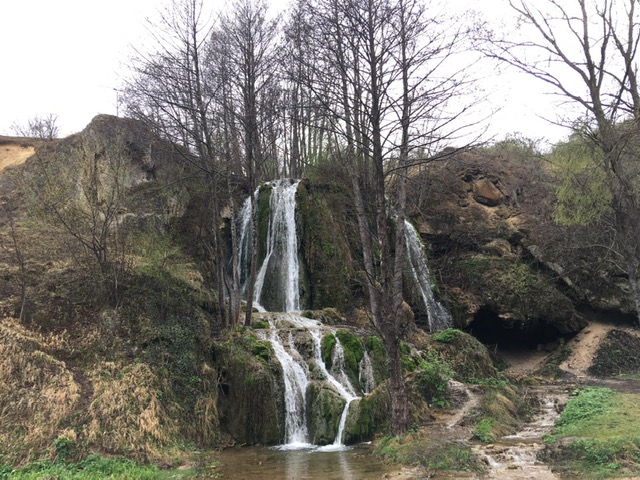
The long descent to Knjazevac took us through a scenic gorge, past a waterfall with cave of obvious cultural importance. Elsewhere, the limestone cliffs were pitted with caves and road signs warned of falling rocks, the latter being much in evidence.
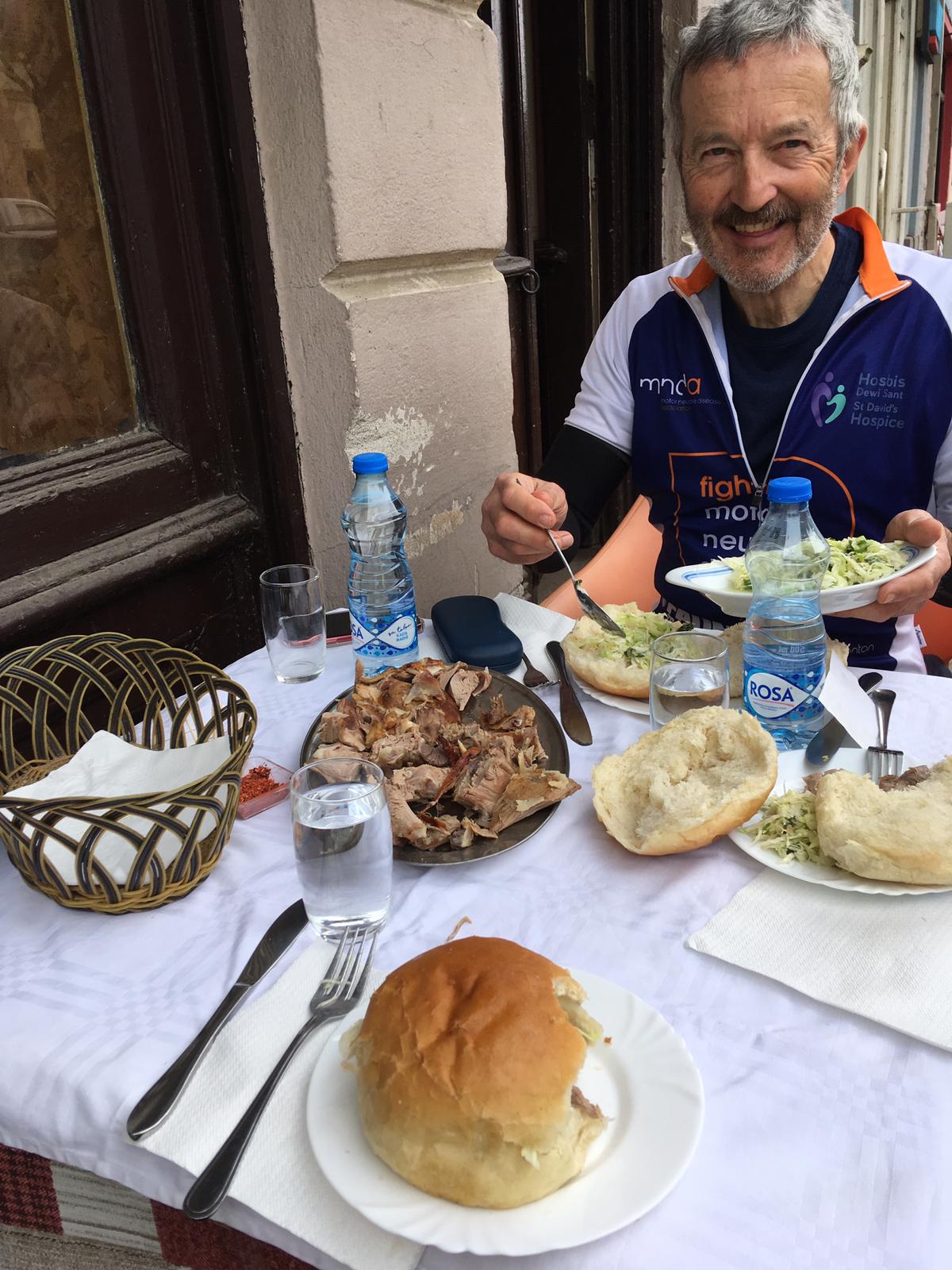
We arrived in Knjazevac at around 1:30pm; I wasn’t allowed to choose our lunch, after the disastrous ‘tomato’ soup and gherkin omelette of yesterday - but the boys chose well and we were able to sit outside in the now-dry early afternoon. Steve tried out his sonic dog deterrer with great success, a notable achievement given that it had made no impact on the dogs of Anglesey in pre-trip trials.
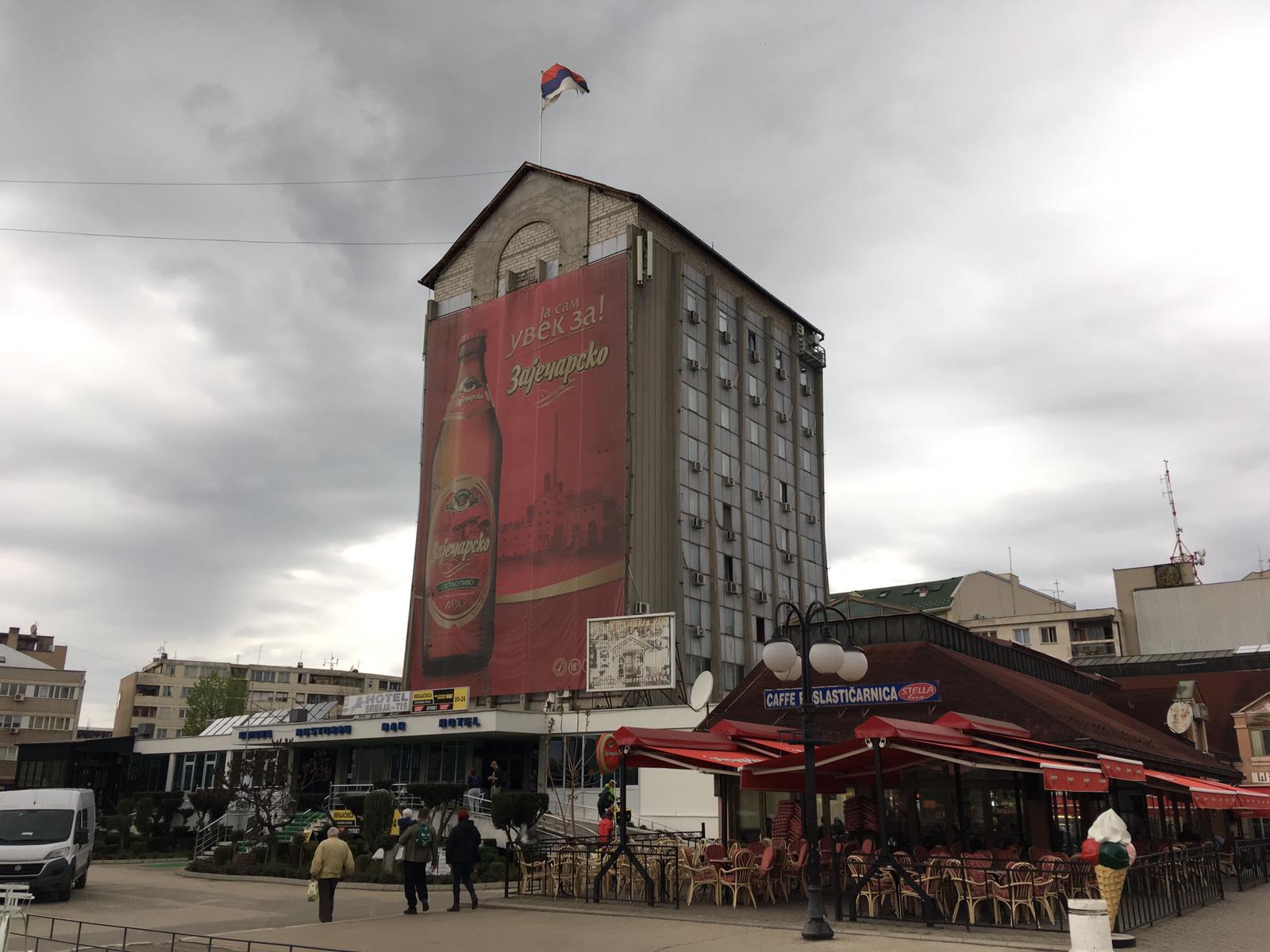
We found accommodation in Zajecar for the equivalent of £29 including breakfast, so set out on the flat run of about 30km to the city. En route we had a tea break at the Pensioners’ Club in Grijan. Stopping to switch on my rear light in the gloomy afternoon, I got chased for about 200m by four dogs - but I outpaced them......good old adrenalin!
About 5km from Zajecar, we passed a coal mine, before arriving in the city just before the return of rain. Our flattest day yet, with less than 700m of ascent, had taken us 104km along our journey home.
April 10th, 2019:

The views were spectacular, with rocky gorges and distant snowy peaks, as we passed through a number of small, mostly-abandoned settlements. Climbing out of one of these, we encountered two hares on the road, whilst the air was alive with the song of skylarks. Together with the blossom-covered trees, it felt like spring had sprung.
Original white cobbles were exposed where the asphalt top coat of the road had been worn away and, as we began the descent to Gaber , the frequent ruts and deformations proved
challenging. A vast opencast minerals site on our right looked dormant - maybe the cause of the decline of the local settlements?

After four days of rain, coffee in the sunshine of the peaceful village of Gaber was a joy before we cycled uphill to Dragoman, where our EV13 guide book recommended that we took a short train ride to the Serbian border rather than the very busy, truck-laden main road. The railway station of this drab town was unmanned and information was scarce. Finding someone working in an adjacent office, we used google translate on his computer to establish that, unfortunately, the train service had been reduced to a single 1016am departure daily.......and it was now midday! We had some unusual soup and an omelette for lunch before heading off by bike.
As it turned out, the freewheel down to Serbia was no problem - possibly because it was lunchtime - and we had soon crossed the border. Passing the queue of trucks, stretching for a couple of kilometres, waiting to enter Bulgaria, a sudden cry from Andy alerted us to the first EV13 route sign that we had seen.
We skirted the town of Dimitrigrad as we headed for Pirot. Again, the guide book had warned us that the road was potentially dangerous due to the volume of trucks - but more recently, a motorway had been constructed to take the commercial traffic and we enjoyed a sunny and warm afternoon’s ride along the river valley to the city of Pirot.
Pirot struck us as being more affluent than the Bulgarian cities we’d visited. It also had bike lanes and many cyclists. Our overnight accommodation was a city-centre apartment, into which we were welcomed by our host, Milan. The bustling city was Ali e with people of all ages going about their business or simply enjoying a walk.
We had travelled 79kms and climbed over 750m. Interestingly, our average speed on the mostly uphill morning was 13kmh but rose to 19kmh on the mostly downhill afternoon.
April 9th 2019:
 We were taught the local dialect for ‘thank you’ by the friendly lady running the Boboveshko cafe where we had breakfast of a Bulgarian version of ham and cheese toastie with coffee. A vast improvement on the peanuts we had for dinner, it set us up for the 40km morning ride to Kyustendil.
We were taught the local dialect for ‘thank you’ by the friendly lady running the Boboveshko cafe where we had breakfast of a Bulgarian version of ham and cheese toastie with coffee. A vast improvement on the peanuts we had for dinner, it set us up for the 40km morning ride to Kyustendil.
A pleasant run on a grey day, our route followed the Struma River through its wooded valley and occasional gorges. St Ivan’s chapel, a national monument was - we were told - a one-apsis church with a narthex. We had no idea what this meant but hope that our readers will be able to enlighten us! Arriving in Kyustendil just as the heavens opened, we found sanctuary in a central square restaurant where we had lunch. As the rain eased and eventually stopped, we headed off towards Trun - 80km away and with little by way of settlements en route. The 600m climb up towards Treklyano was taxing, particularly when heavy rain started to fall. Treklyano was something of a ghost village, with many uninhabited houses that would once have been quite elegant, causing us to wonder whether it had been in a war zone or had suffered the collapse of some significant industry.
Arriving in Kyustendil just as the heavens opened, we found sanctuary in a central square restaurant where we had lunch. As the rain eased and eventually stopped, we headed off towards Trun - 80km away and with little by way of settlements en route. The 600m climb up towards Treklyano was taxing, particularly when heavy rain started to fall. Treklyano was something of a ghost village, with many uninhabited houses that would once have been quite elegant, causing us to wonder whether it had been in a war zone or had suffered the collapse of some significant industry. We nevertheless found a small and lively cafe, where the proprietor told us that we had a further 40km to travel to Trun. By now it was 5:30pm, so we would be arriving in the dark. Leaving the village, I shepherded a gekko safely across the road whilst, further along, Andy was photographing a family of pigs and Steve was captivated by a bedraggled donkey.
We nevertheless found a small and lively cafe, where the proprietor told us that we had a further 40km to travel to Trun. By now it was 5:30pm, so we would be arriving in the dark. Leaving the village, I shepherded a gekko safely across the road whilst, further along, Andy was photographing a family of pigs and Steve was captivated by a bedraggled donkey.
In the rain-free and cool evening we climbed steadily up a river valley. For the whole 40kms to Trun we saw but one vehicle, a border police patrol, but were chased by a pack of dogs that followed us for a considerable distance and almost led to our first use of pepper spray.
Our arrival after nightfall, some 126kms and nearly 1400m of ascent since leaving Boboshevo , was greeted with a further downpour!
April 8th 2019:
 Our day started well, with breakfast served by Nikita, the amiable CEO of the Panorama Hotel. But as we left Dolcevo the rain was falling with increasing intensity and the skies looked leaden. The 11km uphill slog to the Bulgarian border took us up nearly 600m; stopping halfway at a bus shelter to shed some clothing, a group of sheltering workmen told me with broad grins that we must be mad. It was hard to disagree with them!
Our day started well, with breakfast served by Nikita, the amiable CEO of the Panorama Hotel. But as we left Dolcevo the rain was falling with increasing intensity and the skies looked leaden. The 11km uphill slog to the Bulgarian border took us up nearly 600m; stopping halfway at a bus shelter to shed some clothing, a group of sheltering workmen told me with broad grins that we must be mad. It was hard to disagree with them! Getting to the border with a few Macedonian denars left in the kitty, we enjoyed hot soup and coffee in a small border cafe. Thinking that the soup was chicken, I made a clucking sound to the lady - who responded with a ‘baa’.So mutton soup it was!
Getting to the border with a few Macedonian denars left in the kitty, we enjoyed hot soup and coffee in a small border cafe. Thinking that the soup was chicken, I made a clucking sound to the lady - who responded with a ‘baa’.So mutton soup it was! Dropping from 1200m down the other side of the pass in the rain was a very cold affair. The rain eased as the road flattened out.......and then the EV13 route guide went haywire. We climbed up a pleasant rural lane in the light rain, only for it to gradually peter out into a farm track. This plunged down to the river in a boulder strewn and deeply rutted descent, a threatening pack of dogs adding to the tension.
Dropping from 1200m down the other side of the pass in the rain was a very cold affair. The rain eased as the road flattened out.......and then the EV13 route guide went haywire. We climbed up a pleasant rural lane in the light rain, only for it to gradually peter out into a farm track. This plunged down to the river in a boulder strewn and deeply rutted descent, a threatening pack of dogs adding to the tension. Faced with hauling the bikes back up and past the dogs, we chose the alternative of taking off our panniers and clambering over a rocky outcrop. Steve got our third puncture en route and, after changing his tube, we continued along the riverbank for about a km until we hit a road. 45 minutes later we entered the town of Boroshevo, once intended to be the provider of a late lunch but now the place where we would spend the night.
Faced with hauling the bikes back up and past the dogs, we chose the alternative of taking off our panniers and clambering over a rocky outcrop. Steve got our third puncture en route and, after changing his tube, we continued along the riverbank for about a km until we hit a road. 45 minutes later we entered the town of Boroshevo, once intended to be the provider of a late lunch but now the place where we would spend the night.
Having found overnight accommodation, a power cut meant that a hot meal was going to be an impossibility. Drying out our Bulgarian money was essential before Steve managed to get crisps, peanuts, bread, apples and bananas from a small shop just before it closed - that was going to be our dinner by torchlight!
April 7th 2019:
Not realising that North Macedonia was an hour behind Bulgaria, I was up and about far too early after a night when the city was out partying - a marching band came past in full swing at around 4am!.......well, 3am actually!

 Then we reached the foot of the climb - that we completed 11 exhausting kms later at an average gradient of over 8%. From there to Berino, our lunch stop, we passed through wooded valleys and rocky cuttings......dropping to our lowest gear on the slightest of inclines.
Then we reached the foot of the climb - that we completed 11 exhausting kms later at an average gradient of over 8%. From there to Berino, our lunch stop, we passed through wooded valleys and rocky cuttings......dropping to our lowest gear on the slightest of inclines.

![]()
April 6th, 2019:
 GPS took us off piste along a badly rutted farmtrack as we left Gotse Delcheve, eventually bringing us out above the town onto our intended route. We climbed for 14km in the morning sunshine, ascending 900m before the slope finally flattened. A cuckoo called clearly on the lower section, whilst an eagle soared over the hills to the south.
GPS took us off piste along a badly rutted farmtrack as we left Gotse Delcheve, eventually bringing us out above the town onto our intended route. We climbed for 14km in the morning sunshine, ascending 900m before the slope finally flattened. A cuckoo called clearly on the lower section, whilst an eagle soared over the hills to the south.

A huge statue of revolutionary hero Gotse Delcheve crowned the summit, opposite a small but richly-decorated chapel. Wild crocuses carpeted the path to the chapel, with scattered drifts of snow under the pine trees.
The summit cafe was open and, although the amiable owner had no cakes, he served us toast covered with a 1cm layer of jam, declaring it ‘torta’ (cake). Delicious with a coffee!
Our long cold descent was interrupted at one stage by four magnificent chestnut-coloured wild ponies straying across the road, providing an unexpected obstacle for Andy. The views were often breathtaking as we headed down towards North Macedonia along the snaking, harepinned route; way, way below us we could see the beginnings of a fertile plain that later took us through vineyards, orchards and fields of crops.
The small villages through which we passed continued the Bulgarian feature of habitable and inhabited - but unfinished - houses; maybe the equivalent of council tax doesn’t apply until the building’s completed?!  Lunch was grilled trout in a fish farm, served with a Bulgarian ‘skopske’ salad - very similar to a Greek salad. The border crossing came up just a few kilometres later, across the middle of the widening river plain and with Greece just over the mountains to the south. The historic border defence, Simouil’s Fort, stood out amongst the hectares of ? In which soft fruit - possibly strawberries, given the Hobson’s choice of jam, as we reached the exit from Bulgaria.
Lunch was grilled trout in a fish farm, served with a Bulgarian ‘skopske’ salad - very similar to a Greek salad. The border crossing came up just a few kilometres later, across the middle of the widening river plain and with Greece just over the mountains to the south. The historic border defence, Simouil’s Fort, stood out amongst the hectares of ? In which soft fruit - possibly strawberries, given the Hobson’s choice of jam, as we reached the exit from Bulgaria.
A few metres later, entering North Macedonia, I asked the friendly official if I could have my passport stamped. This was, of course, not necessary ‘because you are still in the EU....at the moment’ he said, with a broad grin. Then, after a quick phone call to HQ for permission, the stamp was applied!
By the time we reached Strumica and our overnight stop it was dusk; we’d travelled 120kms and climbed 1400m.
April 5th, 2019:
 The Teshel Motel, in a nod to modernity, had made covers out of sheets into which blankets had been inserted to make quasi-duvets - extremely comfortable and a great recycling solution. After a delicious mushroom omelette served with a far-too-small coffee, it was a steep and frosty 8km climb up to Dospat - the 700m ascent forcing us into a second breakfast at the aptly-named Relax Hotel.
The Teshel Motel, in a nod to modernity, had made covers out of sheets into which blankets had been inserted to make quasi-duvets - extremely comfortable and a great recycling solution. After a delicious mushroom omelette served with a far-too-small coffee, it was a steep and frosty 8km climb up to Dospat - the 700m ascent forcing us into a second breakfast at the aptly-named Relax Hotel.
Then more climbing towards Satovcha, where we had chicken soup and bread for lunch. We hadn’t covered a great distance between breakfast2 and lunch but we had ascended very significantly.........over 1000m! And there was more snow on the way down.
The mountain meadows were blanketed with small purple crocuses as we descended to Satovcha. More climbing past a number of sawmills and a large hydroelectric plant took us into a different valley. Limestone had by now given way to granite, crocuses to a road lined with forsythia and sawmills to stone roof and floor tile producers - production methods ranging from hand-splitting the stone through to diamond saws.
We arrived in Gotse Delchev, formerly called Nevrokop but renamed in 1951 after the local revolutionary hero, just after 5pm. Set on a wide fertile plain at about 500m, the city was ringed by snow-covered peaks stretching from the north to the west. 72km covered and another 1400m of ascent.
April 4th, 2019:
The Ural Hotel in Madan provided a comfortable triple room for £20 but, with the restaurant closed in the offseason, we had to eat out. The mosque dominating the town center swung into action at 5:25 am and, after a cafe breakfast, we headed off at around 9 am.

Our route up a wooded valley took us past sawmills and quarries as we headed for Smolyan, the highest city in Bulgaria at 1000m and a skiing center. We had a coffee in the morning sunshine before tackling the Prevala Pass, a steep 13km climb that took us up into the snow at 1700m. The road down the pass, on the north face of the mountains, had verges of packed snow; we froze!

We enjoyed a late lunch in the Alpine-looking village of Shirak Laka - including a Bulgarian specialty potato dish - before heading further down the valley. Rain began to fall.....steadily at first and then a cold downpour, as we sped past numerous fish farms and a hydroelectric plant. Lower down the valley road was thankfully dry and it felt much less cold.
We turned left and cycled through the stunning Buinovo Gorge, Bulgaria’s longest, to Teshel and an overnight stop. 82km covered and 1400m climbed.
April 3rd, 2019:
We were the only guests in Momchilgrad’s Hotel Konka, a vast new and opulent building of marble and wood used primarily, we’re told, for weddings. The two burly Bulgarians looking after the establishment could not have been more helpful, sorting out our evening meal and breakfast as well as giving our bikes star storage in the function suite.


After lunch in a roadside motel - the first we’d seen (motel, that is, not lunch!) - our route took us up the valley of the Varbitsa River, that has an enormous floodplain. We also passed a high dam, perched precariously over the valley, that we later learned held back tailings from lead works.

and climbed over 1600metres.
April 2nd, 2019:
 A 14km climb out of Ivaylovgrad, at an average gradient of 4.5%, warmed us up on this cool spring morning. The quiet road took us through the multitude shades of green of the mixed woodland, though extensive roadworks resulted in spine-jarring progress on compacted gravel for many Kilometres.
A 14km climb out of Ivaylovgrad, at an average gradient of 4.5%, warmed us up on this cool spring morning. The quiet road took us through the multitude shades of green of the mixed woodland, though extensive roadworks resulted in spine-jarring progress on compacted gravel for many Kilometres.
Sheep became the first grazing animals we had seen on this trip, the shepherd quickly calling his three large dogs to heel when they started showing a somewhat unhealthy interest in us cyclists. Further on, Steve had to take avoiding action as a stray bullock wandered out of the trees and across his path. Elsewhere, long trails of Processionary Moth caterpillars stretched halfway across the road. 
Eventually reaching the resurfaced road, we had the smoothest of descents for the 11km into Krumovgrad, where we took a late lunch. The small town of about 7,000, named after the 14th century King Krum, seemed a little run down but the owner of the cafe at which we ate was very optimistic about the town’s future. After following the River Krumovitza, we started the longest climb of the day - that turned out to be 20kms at an average 5% gradient, but with sections of up to 10%. The descent into Momchilgrad, bordered by the hills of the Rhodopes Mountains and with some interesting rock formations, was completed just as the evening turned cold. Momchilgrad has a predominantly Turkish population, so it was no surprise to hear the call to the faithful as we entered the town. We’d covered 90kms and climbed over 1500 metres.
After following the River Krumovitza, we started the longest climb of the day - that turned out to be 20kms at an average 5% gradient, but with sections of up to 10%. The descent into Momchilgrad, bordered by the hills of the Rhodopes Mountains and with some interesting rock formations, was completed just as the evening turned cold. Momchilgrad has a predominantly Turkish population, so it was no surprise to hear the call to the faithful as we entered the town. We’d covered 90kms and climbed over 1500 metres.
April 1st, 2019:
 Today we had breakfast in Turkey, lunch in Greece and dinner in Bulgaria! Before leaving Edirne, we visited the 450-year old Selimye Mosque - a superb example of classical Ottoman architecture built in only 6 years. A small garden, now a covered memorial, embedded within the Mosque remembers a lady who didn’t want to lose her treasured land to the mosque. Unlike Trump’s famous spat with a Scottish crofter over his Turnberry golf course, here the imams worked with the lady to agree a mutually acceptable and eternal solution.
Today we had breakfast in Turkey, lunch in Greece and dinner in Bulgaria! Before leaving Edirne, we visited the 450-year old Selimye Mosque - a superb example of classical Ottoman architecture built in only 6 years. A small garden, now a covered memorial, embedded within the Mosque remembers a lady who didn’t want to lose her treasured land to the mosque. Unlike Trump’s famous spat with a Scottish crofter over his Turnberry golf course, here the imams worked with the lady to agree a mutually acceptable and eternal solution.
Our ride today was almost blissful, with traffic-free roads and a pleasant 22C temperature. The distance covered, at around 45km, was relatively short but covered two border crossings and much stamping of passports. Our Greek salad lunch in a small border village was excellent, accompanied as ever by much help from local people with the language! It’s striking how different the most simple words are between Turkish, Greek and Bulgarian........ tessekur ederim, efcharisto and blagodarya for thank you!
Our Greek salad lunch in a small border village was excellent, accompanied as ever by much help from local people with the language! It’s striking how different the most simple words are between Turkish, Greek and Bulgarian........ tessekur ederim, efcharisto and blagodarya for thank you!
Tonight we’re in the village of Ivaylovgrad which, despite being small, has three gambling clubs - possibly due to its proximity to Greece and Turkey. We shall not be visiting them......
March 31st, 2019:
 Our second day saw us crossing 128km of undulating Turkish landscape, with some long hills and a strong north easterly wind. The 7C temperature, apparently 14 degrees less than the norm for this time of year, made for a very cold morning. This eventually gave way to warm sunshine, resulting in a pleasant cycle into Edirne to end our day.
Our second day saw us crossing 128km of undulating Turkish landscape, with some long hills and a strong north easterly wind. The 7C temperature, apparently 14 degrees less than the norm for this time of year, made for a very cold morning. This eventually gave way to warm sunshine, resulting in a pleasant cycle into Edirne to end our day.
We thought we’d be starting an hour earlier, but President Erdogan decreed a year ago that Turkey should be in permanent summer time. It’s also Election Day for municipal authorities throughout the country; this may be leading to the quieter traffic that we’re pleased to see. On the road, we have yet to see any grazing cattle in the arable fields, so assume that they are kept permanently indoors, with crops (mainly wheat and rape) dominating.
The closest we came to a mishap was at lunchtime, when the owner of the Terminus Cafe at Babaeski bus station gave Andy a cuddle! It’s otherwise been an uneventful slog of a day, relieved by the generally humorous misunderstandings during our encounters with cafe staff. Steve’s ability to pronounce his few words of Turkish differently on each occasion that they’re used continues to baffle all Turks who encounter him! (Pic is of sunset in Edirne)
03/30/2019: First Full Day Of Cycling

Our alarm clock was the 5:45am call to prayer from a nearby minaret, timely as we needed to be away promptly. Our optimism that an early start would beat the traffic was misplaced - the ride through the city was technically challenging and occasionally terrifying! There were, nevertheless, bonuses in the form of buildings and views, including the magnificent Blue Mosque ( above).
The patron saint of puncture-less bike rides clearly had her focus elsewhere, as I had two flats - both in the rear wheel. Hilariously - but understandably, as the first occurred before we’d had coffee - I managed to refit the duff tube that I had just removed!
We skirted the Bosphorus and Marmara Sea all morning, a strong north-eagerly wind helping us along after the slow exit through the city. Our breaks enabled us to sample local delicacies, including a tasty fruit compote that also contained haricot beans........
By the end of the day turned inland and reached Corlu, 120km from our starting point, although it was just getting dark as we arrived. Tomorrow we hope to get to the Greek border.
03/29/2019:

Following pistachio cake and coffee in one of many cafes near the waterfront, we took a ferry across the Bosphorus - cycling over the bridge is not allowed - to Asian Turkey. The very busy waterway, the only link to the Black Sea and with Sebastopol of huge significance to Russia ( a massive country with few ports that don’t freeze over in winter), reminded me of Sydney or Hong Kong - ferries whizzing seemingly everywhere! Buskers entertain us on both ferry journeys - with Leonard Cohen’s Allelujah a highlight!

From midday, the calls to prayer from imams echoed around this city of 22m people, a reminder that we’re in a culturally different place despite the presence in the city centre of all the familiar High Street shops from home.
We get back to Martin’s apartment before the rush hour - a classic misnomer, as nobody’s going anywhere soon - and determine our route out of the city for tomorrow
03/28/2019:

Our journey today was pretty uneventful, with just a little turbulence over the Dalmatian coast to liven up the latter stages of the flight. The first six rows in the Turkish Airlines planes were the posh seats, although the only advantage over the rest of us seemed to be their access to two toilets ( we had three between the remaining 32 rows). Brings a whole new meaning to the term ‘Business Class’!
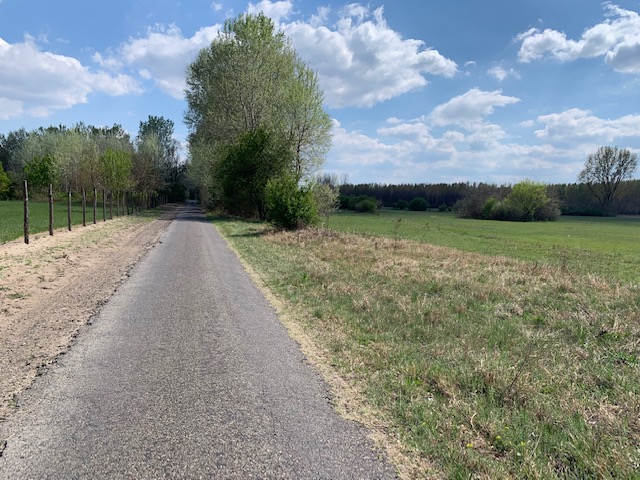
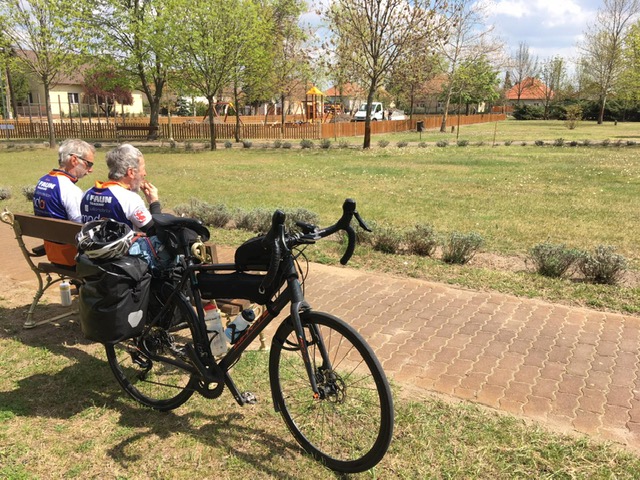
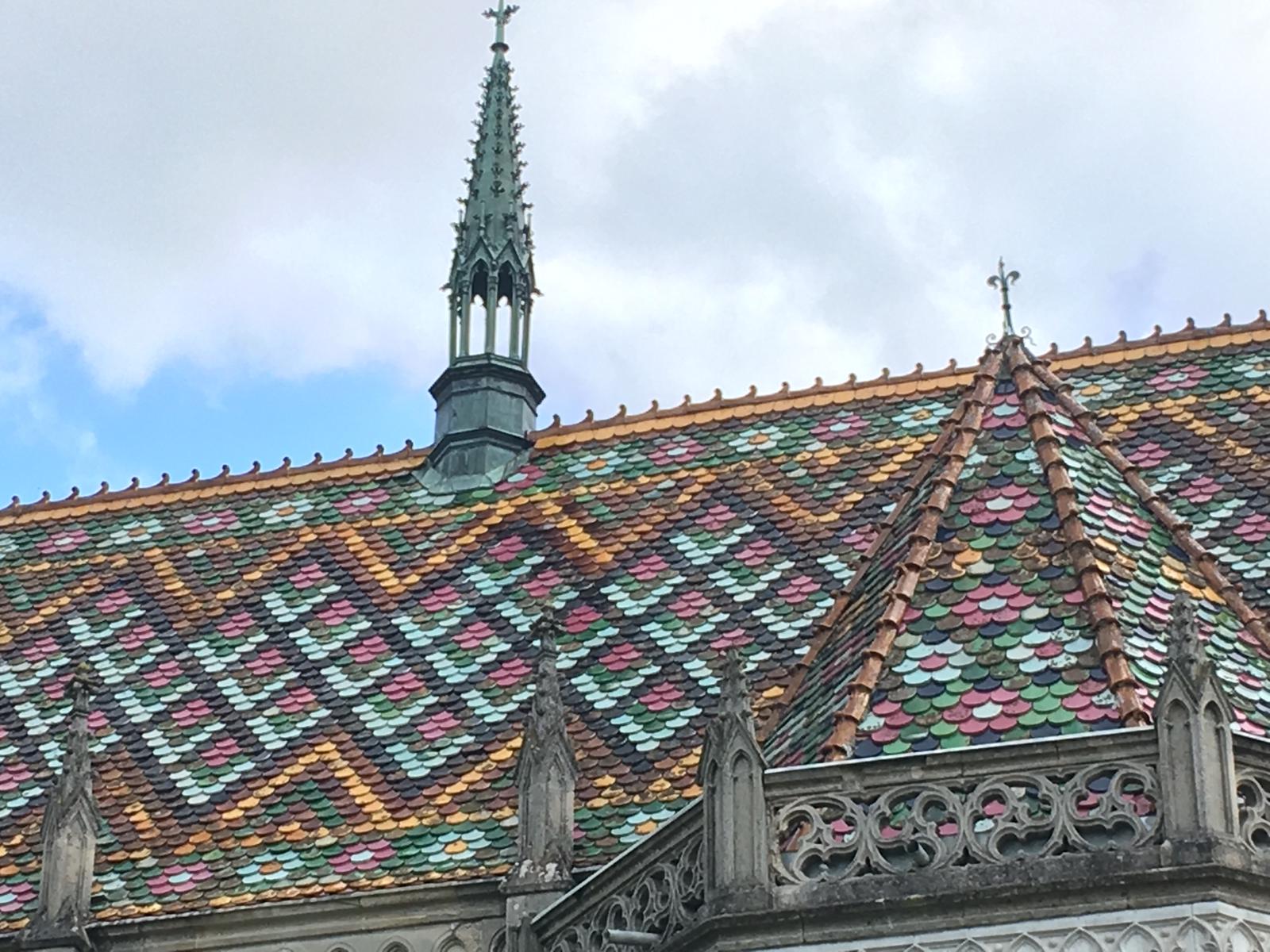 We’d noticed that most of the many churches were busy with services or other events, presumably in the run-up to Easter. One in particular stood out because of its multicoloured roof tiles.
We’d noticed that most of the many churches were busy with services or other events, presumably in the run-up to Easter. One in particular stood out because of its multicoloured roof tiles. 